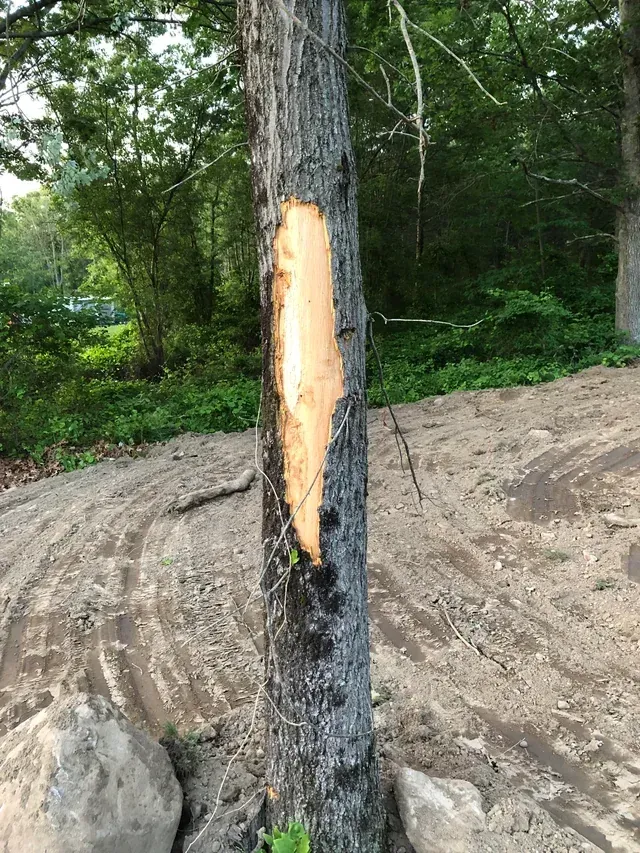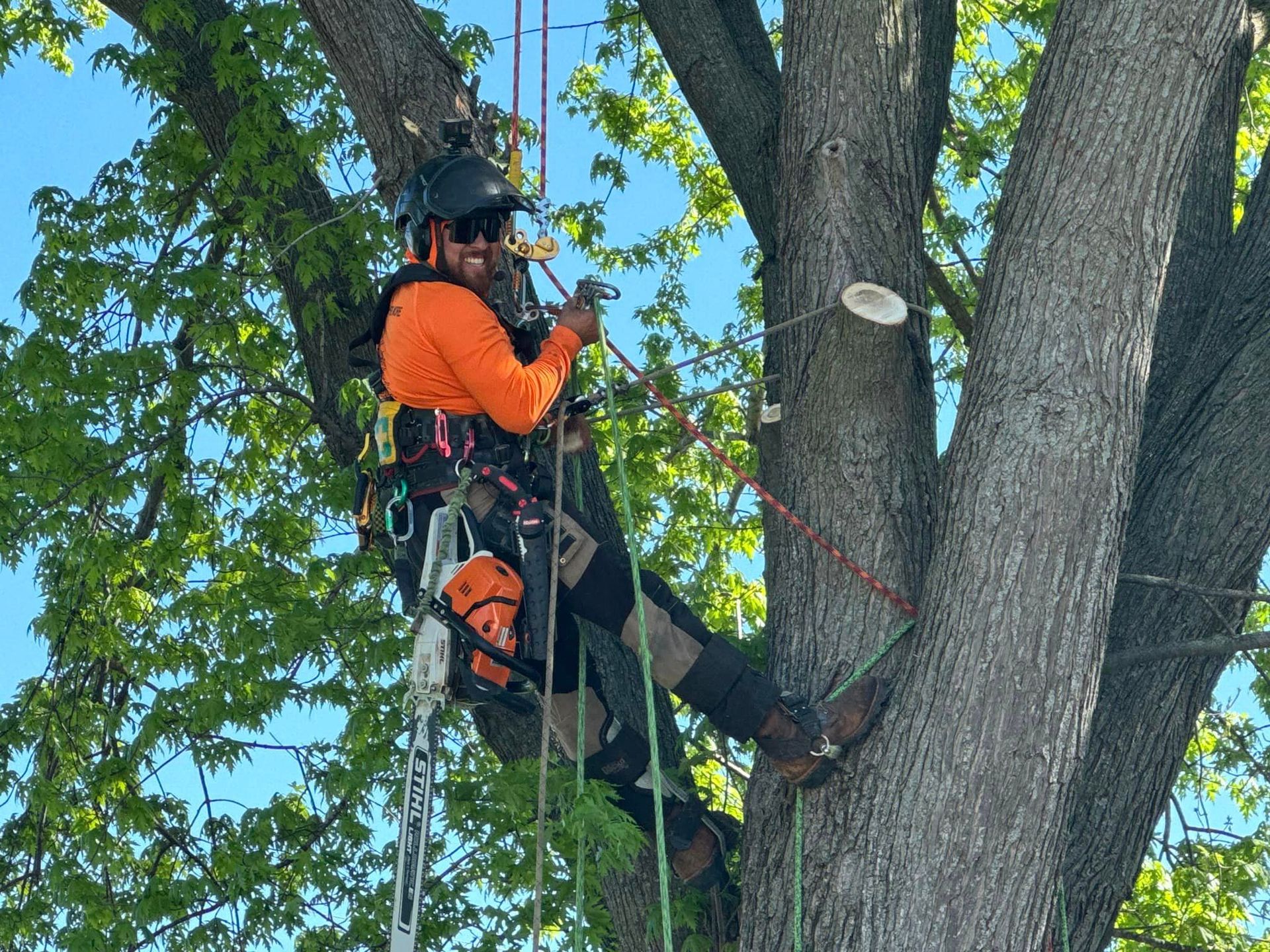Recognizing Winter Damage to Trees in Southern Wisconsin
7130207976 • March 28, 2025
Recognizing Winter Damage to Trees in Southern Wisconsin
Winter in Southern Wisconsin can be harsh, bringing snow, ice, and strong winds that can take a toll on our beloved trees. Understanding the signs of winter damage is important for homeowners and tree enthusiasts alike. In this blog post, we'll discuss how to identify winter damage, what you can do about it, and how to protect your trees for future winters.
Signs of Winter Damage
Broken Branches: Heavy snow and ice can weigh down branches, leading to breaks. Look for branches that are cracked, splintered, or completely broken off. This is not only unsightly but can also pose a safety hazard.
Bark Damage: Winter conditions can cause bark to split or peel. This can create entry points for pests and diseases. Inspect the bark for any unusual peeling or cracks.
Leaning Trees: If a tree appears to be leaning, it may have suffered root damage from frost heave or high snow accumulation. This condition can destabilize the tree and make it more prone to falling.
Missing Foliage: After the winter thaw, if you notice significant leaf loss or a lack of new buds in the spring, your tree may have endured winter stress or damage.
Fungal Growth: Winter damage can lead to disease, as damaged areas can become breeding grounds for fungi. Look for unusual growths or discolorations on the tree's trunk.
What to Do If You Spot Damage
Assess the Damage: Determine how extensive the damage is. Minor issues can sometimes be solved with simple pruning, while severe damage may require professional help.
Prune Wisely: For broken branches, consider pruning back to a healthy junction. Avoid excessive pruning, as this can further stress the tree.
Professional Evaluation: If you're unsure about the extent of the damage or how to address it, consult a certified arborist. They can provide expert guidance and recommend the best course of action.
Protecting Your Trees for Future Winters
Proper Pruning in Fall: Pruning your trees before winter can help minimize the risk of branch breakage. Remove any dead or weak branches and avoid heavy pruning during late summer or fall.
Moisture Management: Ensure your trees are well-hydrated in the fall before winter sets in, as this helps them withstand freezing temperatures.
Mulching: Apply mulch around the base of your trees to retain moisture and protect the roots from freeze-thaw cycles.
Snow Removal: If snow accumulates on your trees, gently brush it off to prevent excessive weight. Avoid using sharp tools that could further injure the tree.
Conclusion
Being proactive in recognizing and addressing winter damage to trees can help ensure their long-term health and safety. Regularly inspecting your trees, especially after harsh winters, is a vital step in maintaining a healthy landscape. If you do spot any signs of damage or have concerns about your trees, don’t hesitate to reach out for professional assistance. Investing in your trees now will pay off by enhancing the beauty and safety of your property for years to come.
Contact Us
If you have questions about tree care or need help assessing winter damage, our team at T.E.A.M. Tree Service is here to help. Contact us today for an evaluation or to schedule a consultation!


By 7130207976
•
March 17, 2025
As winter yields to spring, many homeowners and gardeners begin to think about the seasonal tasks that come with the warmer weather. Among these, tree trimming is a crucial activity that can significantly affect the health and aesthetics of your landscape. In this blog, we’ll explore the importance of spring tree trimming and its benefits for tree health. 1. Promotes Healthy Growth Spring is a time of renewal, and trees respond to the warming temperatures and increasing sunlight by pushing out new growth. Trimming during this time encourages healthy growth by removing dead or diseased branches, allowing the tree to focus its energy on vigorous new shoots. By pruning wisely, you can help shape the tree's structure and promote balanced growth. 2. Enhances Tree Structure Tree trimming helps improve the overall structure and framework of your trees. Removing branches that cross each other or grow inward can reduce the risk of injuries in windy conditions. Well-structured trees are less likely to suffer from structural failure and tend to be more resilient to storms. 3. Encourages Fruit and Flower Production For fruit-bearing and flowering trees, spring trimming can enhance production. By removing weak or overcrowded branches, you allow for better light penetration and air circulation, which are essential elements for optimal flowering and fruiting. This step not only boosts the aesthetic appeal of your landscape but can also lead to a more fruitful harvest later in the season. 4. Protects Against Pests and Diseases Spring tree trimming allows you to inspect your trees for signs of pests and diseases. By identifying and removing affected branches early, you can prevent the spread of infestations or infections that could compromise the health of your tree. Pruning during this time also minimizes the risk of attracting pests, as many insects are more active during warmer months. 5. Facilitates Better Air Circulation Regular trimming improves air circulation within the canopy of the tree, which reduces humidity and helps prevent fungal diseases. Trees with good air circulation can better manage moisture levels, leading to healthier foliage and overall tree longevity. 6. Safety Considerations Overgrown trees can pose safety risks, especially near homes, power lines, and walkways. Spring trimming allows homeowners to manage tree growth and reduce the potential hazards posed by falling branches. Regular maintenance can prevent accidents and damage to property, ensuring a safe outdoor environment. Conclusion Spring tree trimming is more than just a cosmetic enhancement; it's a vital step in maintaining the health and longevity of your trees. By promoting healthy growth, improving structure, encouraging blossoms and fruits, protecting against pests, and increasing safety, trimming can lead to a more vibrant landscape. If you're unsure about how to trim your trees effectively, consider consulting a certified arborist who can provide professional guidance and assistance. Make spring tree trimming a part of your seasonal maintenance routine, and watch your trees flourish through the warmer months!
Learn More About
T.E.A.M. Tree Service
Serving Rock, Dane, and Walworth counties, T.E.A.M. Tree Service specializes in tree removal, trimming, stump grinding, and weight reduction. 24-hour emergency service. 5% off for seniors and military. Over 40 years of combined experience. Call today.
Roscoe, IL
Rockton, IL
Rockford, IL
Janesville, WI
Beloit, WI 53511
Milton, WI 53563
Poplar Grove, IL
South Beloit, IL
Clinton, WI 53525
Caledonia, IL 61011
and surrounding areas
Business Hours
Mon - Fri 8:00 am - 4:00 pm
Sat - Sun Emergencies/Storm Damage
24/7 Emergency and Storm Damage Service.
Address: 645 3rd St., Beloit, WI 53511
Hi. Do you need any help?
Privacy Policy
| Do Not Share My Information
| Conditions of Use
| Notice and Take Down Policy
| Website Accessibility Policy
© 2025
The content on this website is owned by us and our licensors. Do not copy any content (including images) without our consent.

Share On: